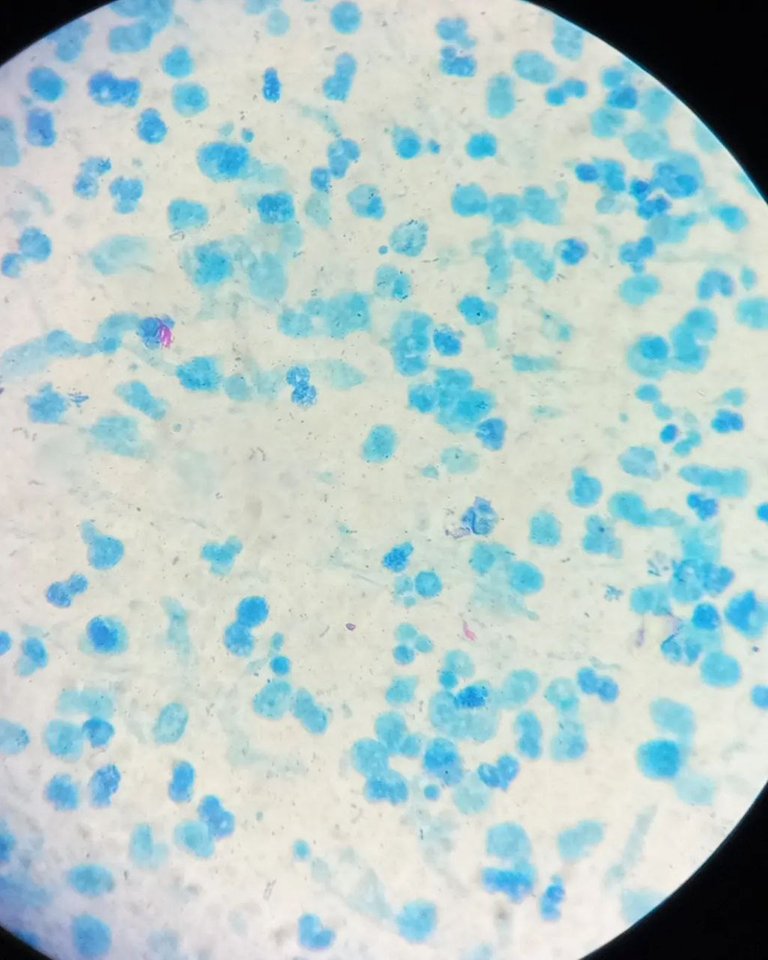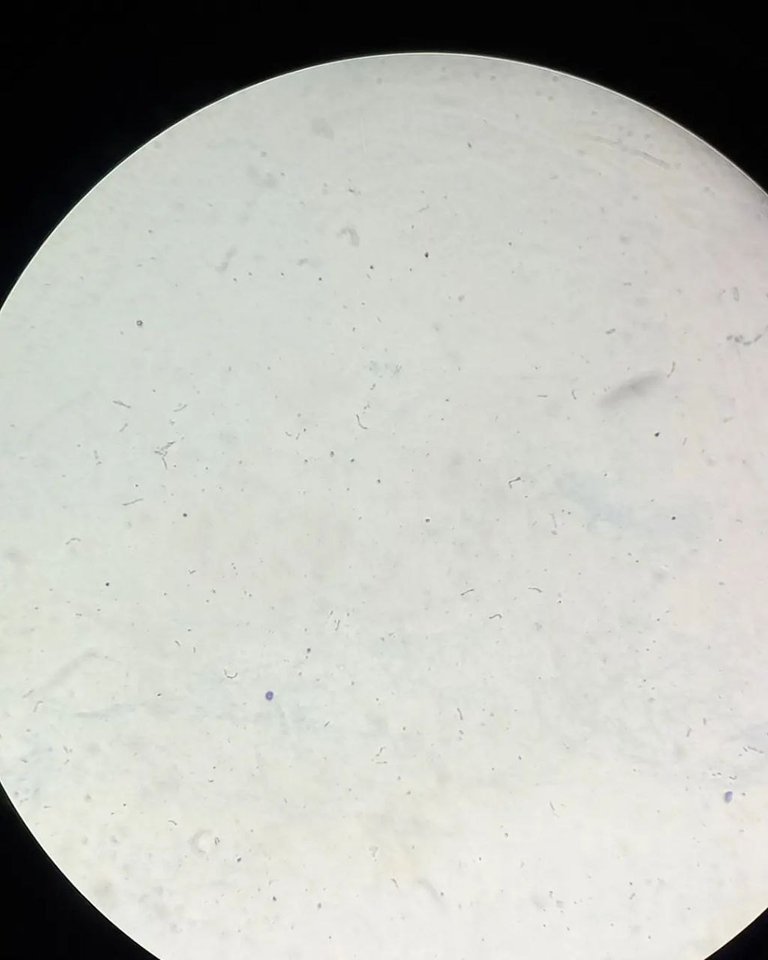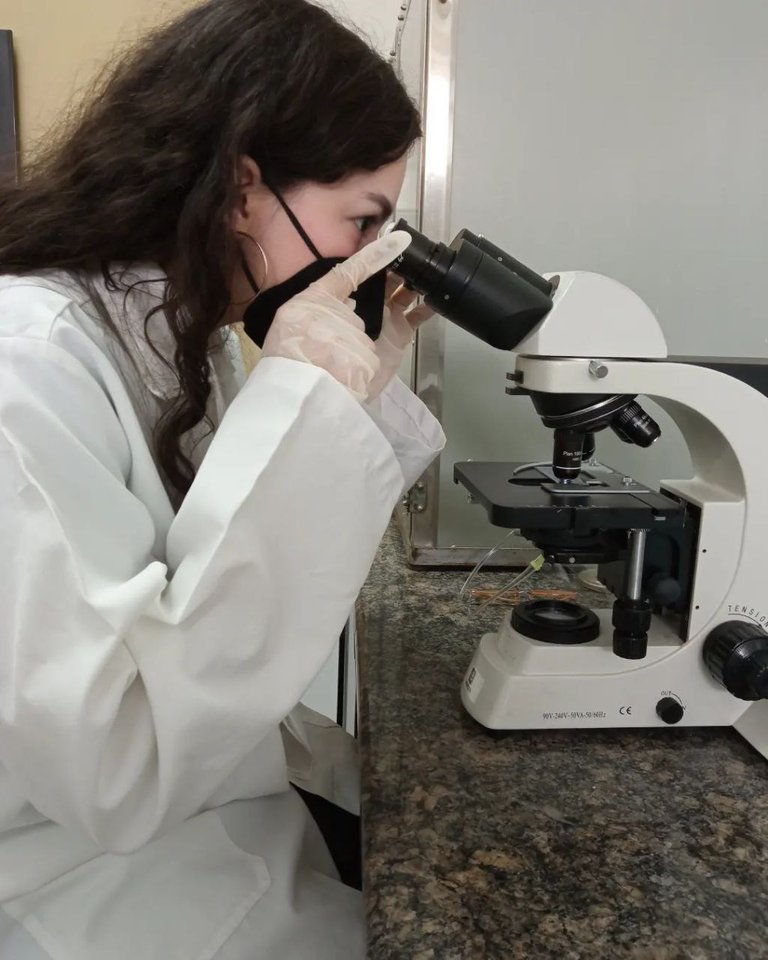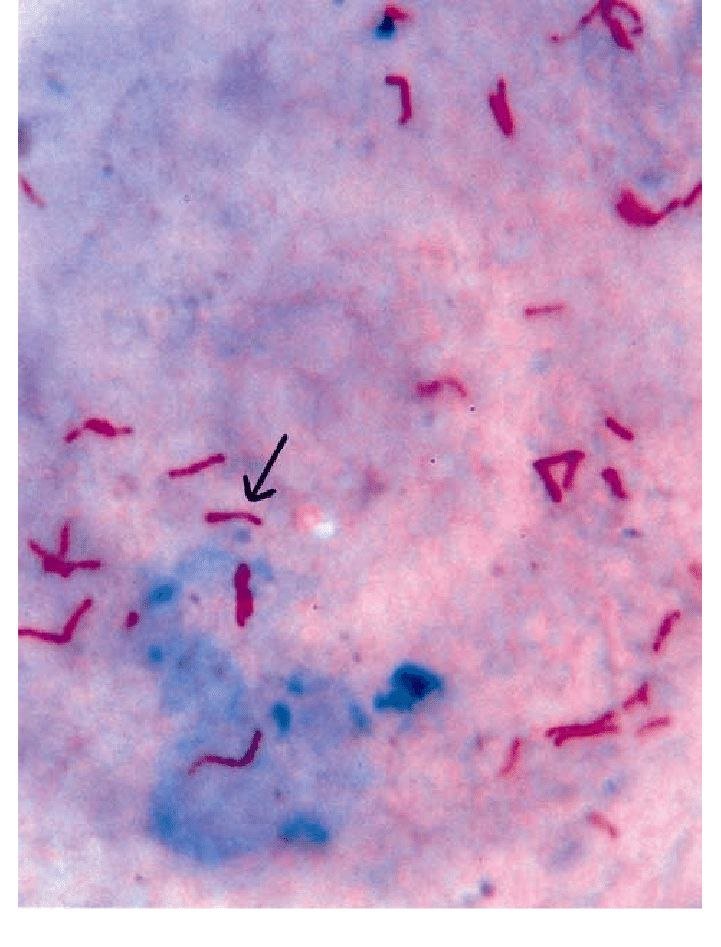(SPA/ENG) Bacilo de Koch - Mycobacterium tuberculosis, una mirada al microscopio/ Koch's Bacillus - Mycobacterium tuberculosis, a look under the microscope
El bacilo de Koch es una bacteria aerobia estricta, inmóvil, no posee flagelos ni cápsula, tampoco forma esporas. Cuando se dice que es aerobia estricta significa que necesita de oxígeno para poder desempeñar sus funciones y su vida misma, y, que un ambiente anaeróbico es letal.
Koch's bacillus is a strictly aerobic, nonmotile bacterium that does not have flagella or a capsule and does not form spores. When we said that it is strictly aerobic, it means that it needs oxygen to be able to carry out its functions and its very life, and that an anaerobic environment is lethal.
Dicha bacteria es la causante de la enfermedad infecciosa tuberculosis que, para el año 2015 cobró la vida de 2 millones de personas en todo el mundo, ocupando así, la principal causa de muerte infecciosa por encima del VIH y el paludismo. Este texto será lo más austero posible, quiero que conozcan la técnica de tinción y sus características a través de un recorrido por el laboratorio del hospital donde veo las prácticas. De esta forma aprovecho de presentarme como estudiante de medicina.
This bacterium is the cause of the infectious disease tuberculosis which, by 2015, claimed the lives of 2 million people worldwide, thus occupying the main cause of infectious death above HIV and malaria.This text will be as austere as possible, I want you to know the staining technique and its characteristics through a tour of the hospital laboratory where I receive the practices. In this way I take advantage of introducing myself as a medical student.


Pics taken by me, both of them. The fuchsia structure of the first corresponds to Koch's bacilli and the rods of the second photograph are these bacteria. las fotos fueron tomadas por mí. La estructura fucsia de la primera imagen corresponde a varios bacilos de Koch y las varillas de la segunda imagen también.
La muestra que se tomó era de origen respiratorio, esputo para ser específicos. Este se incorpora en la lámina realizando círculos y evitando superposiciones. La técnica de coloración utilizada se denomina Zielh Nielsen pues se emplea cuando la bacteria a examinar a través del microscopio tiene ácidos grasos de cadena larga, como los ácidos micólicos, estos le dan la característica al microorganismo de ser ácido-alcohol resistente, lo que significa que no puede usarse técnicas simples de coloración.
El colorante principal se denomina fucsina fenicada y al tener fenol se garantiza la penetración del colorante en la pared de la bacteria con uso de calor, es de color rojo o fucsia y este es el que adoptará el bacilo de Koch, por resistir al ácido alcohol. Entonces, se aplica HCl + alcohol, se lava la muestra y se aplica el colorante de contraste: azul de metileno, por lo que los otros componentes del frotis se verán de color azul.
The sample that was taken was of respiratory origin, sputum to be specific. This is incorporated into the sheet making circles and avoiding overlaps. The staining technique used is called Zielh Nielsen because it is used when the bacteria to be examined under the microscope have long-chain fatty acids, such as mycolic acids, these give the microorganism the characteristic of being acid-alcohol resistant, which means that simple coloring techniques cannot be used. The main colorant is called carbol fuchsin and having phenol guarantees the penetration of the colorant into the wall of the bacterium with the use of heat, it is red or fuchsia and this color is the one that the Koch bacillus will adopt, because it resists acid alcohol. Then, HCl + alcohol is applied, the sample is washed and the contrast dye is applied: methylene blue, so the other components of the smear will appear blue.
Ahora bien, esta bacteria forma parte de la familia mycobacteriaceae y pertenece al orden de los actinomycetales, se ven diminutos e incluso adorables a través del microscopio pero pueden causar la muerte. En caso que los lectores tengan curiosidad y a su vez alguno de sus familiares trabaja en el área de la salud y puede ayudarlos a ver lo que estoy viendo en su laboratorio, por favor usen: mascarillas, caretas y guantes, ya que es muy probable su contagio si no se protege.
Now, this bacterium is part of the mycobacteriaceae family and belongs to the order of actinomycetales, they look tiny and even adorable under the microscope but they can cause death. In case my readers are curious and one of their family members works in the health area and can help them see what I am seeing in their laboratory, please use: masks, shields and gloves, cause' it's very likely that you can be infected if you don't protect yourself.

Y esta soy yo, emocionada buscando bacterias. And this is me, excited looking for the bacterias

Su post ha sido valorado por @ramonycajal
Thank you so much :)
Congratulations @nathanielamq! You have completed the following achievement on the Hive blockchain and have been rewarded with new badge(s):
Your next target is to reach 900 upvotes.
You can view your badges on your board and compare yourself to others in the Ranking
If you no longer want to receive notifications, reply to this comment with the word
STOPCheck out the last post from @hivebuzz:
Support the HiveBuzz project. Vote for our proposal!
Thank you :)
De nada @nathanielamq 😊🌹
Apóyenos también y vote por nuestro testigo.
Recibirá una insignia adicional y un voto más fuerte de nuestra parte cuando le notifiquemos.